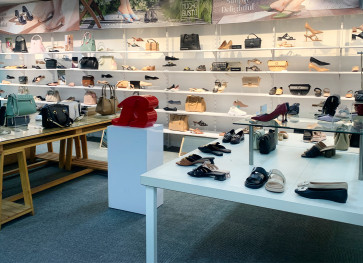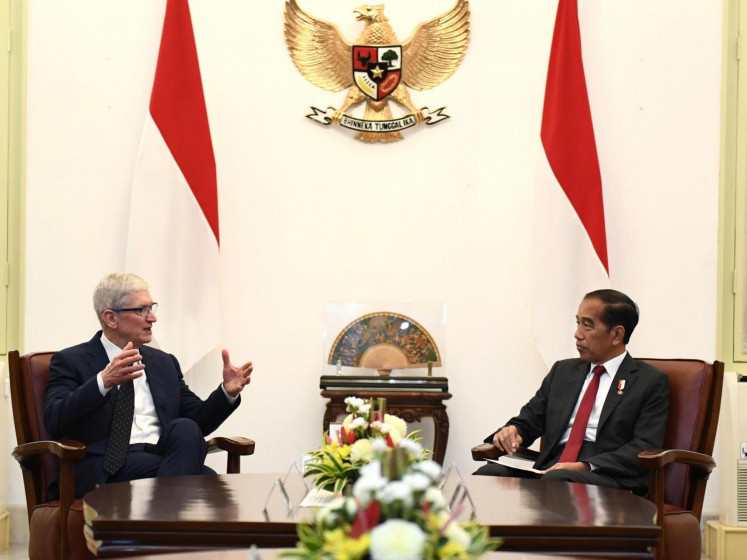Analysis: Automobile market in indonesia: Demand drivers and outlook
The automotive market has grown at an annual average rate of 17
Change Size

T
he automotive market has grown at an annual average rate of 17.2 percent over the last three years.
Since the 2008-2009 financial crisis, which caused a correction to the automotive market of 16.2 percent in 2009, it has enjoyed continual growth, albeit with a downward trend.
In 2010, the automotive market rebounded with exceptional growth of 57.3 percent and continued to post double-digit figures until 2013, with growth of 10.2 percent.
Even when the market was rattled by the new loan-to-value (LTV) policy in 2012, it still posted strong growth of 24.8 percent.
From the consumer preference perspective, the multi-purpose vehicle (MPV) segment has dominated recent growth in the domestic automotive market.
This segment satisfies consumers' desire for automobiles that carry more passengers yet are relatively fuel efficient and affordable.
Although growth in the MPV segment has been slightly slower than that of the total market in the last three years, with an average annual growth of 16 percent, it has nevertheless contributed hugely to the automotive market, accounting for 65 to 70 percent of sales.
Interestingly, September 2013 witnessed a new entrant to the automotive market ' low-cost green cars (LCGC).
In the last four months of 2013, LCGC contributed 4.2 percent to the year's total automotive sales, or 14 to 15 percent of monthly sales.
Subsequently, in the first half of 2014, 85,600 LCGCs were sold ' about 13 percent of total sales for the automotive market.
LCGCs are attractive to the new middle class as they are fuel efficient and cheaper, by about Rp 20 million (US$1,712), than the lowest priced of the existing Low-MPV and hatchback models, which beforehand had been the 'cheapest' automobiles on the market.
Unsurprisingly, this has caused a shift in demand to the LCGC segment with prices below Rp 200 million.
This segment is expected to act as an additional market driver in the long term, for both the domestic and export market.
It will also enhance integration of the national automotive industry, ranging from components to assembly, thereby opening additional avenues for Indonesia to become a regional automotive production base.
Demand patterns for automobiles in Indonesia over the last decade generally show that trends in the market are influenced by several factors, including purchasing power, inflation, interest rates and commodity prices.
Increased purchasing power is an important aspect in higher demand for automobiles in Indonesia.
Presently, the middle class is growing annually by about 7 million people.
Per capita income (PCI) currently stands at more than $5,200 based on purchasing power parity (PPP).
An empirical study conducted by the Carnegie Endowment showed a strong positive correlation between PCI based on PPP and average income elasticity as regards to automotive ownership.
Cross-country data shows that when the PCI of a country remains below $3,400, elasticity is only 0.6.
Elasticity rises sharply to 1.9 when PCI increases to $3,400-$10,000, Indonesia's category since 2006.
However, elasticity drops after PCI reaches $10,000 and higher.
This reflects recent trends in Indonesia. Before 2006, average annual growth in the automotive market was only 1 percent, whereas after 2006 this figure rocketed to 21 percent.
About 75 percent of automobile purchases in Indonesia are made through a bank or multifinance arrangement.
Inflation affects interest rates, which in turn reduce purchasing power and the demand for automobiles.
For example, rises in inflation and high interest rates in 2005 and 2008 led to inevitable corrections in the automotive market.
In November 2005, inflation reached 18.4 percent, causing the Bank Indonesia (BI) rate and lending rate to rise to their highest levels of 12.75 percent and 17.88 percent, respectively, in 2006.
The same year saw a correction to the automotive market of 40.3 percent.
Similarly in August 2008, when inflation reached 11.9 percent, the BI rate climbed to 9.5 percent in November, causing the lending rate to rise to its highest level of 16.67 percent in September 2009.
The subsequent correction in the automotive market in 2009 was 16.2 percent.
These conditions indicate a strong correlation between the lending rate and the automotive market.
Based on our calculations, each 100 basis points rise in the former leads to a 4.53 percent correction in the latter.
The automotive market is also somewhat influenced by commodity price movements, especially in the commercial segment, consisting of pickup trucks, 4x4s and double cabins, which contributes about 30 percent to the total market.
Our observations of major Indonesian commodity price movements ' for both soft and hard commodities like crude palm oil (CPO) and coal ' indicate a significant effect on demand for commercial cars.
Each 1 percent drop in the price of CPO causes demand for pickups, 4x4s and double cabins to fall by 1.09, 1.45 and 1.29 percent, respectively.
Meanwhile, each 1 percent drop in the price of coal causes demand for these same cars to drop by 0.88, 1.18 and 1.12 percent, respectively.
As such, demand for commercial cars is more sensitive to price movements of CPO than those of coal.
So, how about the demand for automobiles in 2014? In line with our previous expectations, Indonesia's automotive market is maintaining moderate growth amid the current economic slowdown.
The first half of 2014 saw sales of 642,311 automobiles, year-on-year (y-o-y) growth of 6.7 percent, down from y-o-y growth in the same period last year of 12.5 percent.
We do not expect inflation or interest rates to pose a serious threat to the automotive market in 2014.
Even though these might rise, conditions are far better now compared to those that led to the turbulence of 2006 and 2009.
We expect inflation in 2014 to have a year-end level of 5.5 percent and the lending rate to hover at 13 to 15 percent.
Low commodity prices will cause demand growth in the commercial segment to remain limited.
Conversely, the expansion of Indonesia's middle class is expected to contribute to increased purchasing power in the domestic automotive market, especially in the Low-MPV sub-segment and LCGC segment.
The LCGC segment will also increase its contribution in 2014, with estimated sales of 150,000 units, or 11 percent of the total market.
Even though a shift in demand has taken place in the Low-MPV sub-segment, the MPV segment will continue its important contribution to the market with the emergence of several models ' some new and others 'facelifts' from the mid- and high-MPV sub-segments.
In consideration of all these factors, we predict that the automotive market in 2014 will see sales of 1.31-1.34 million units, growth of 7 to 9 percent, slightly above our earlier forecast of 6 to 8 percent.
______________
The writer is head of industry and regional research at Bank Mandiri









